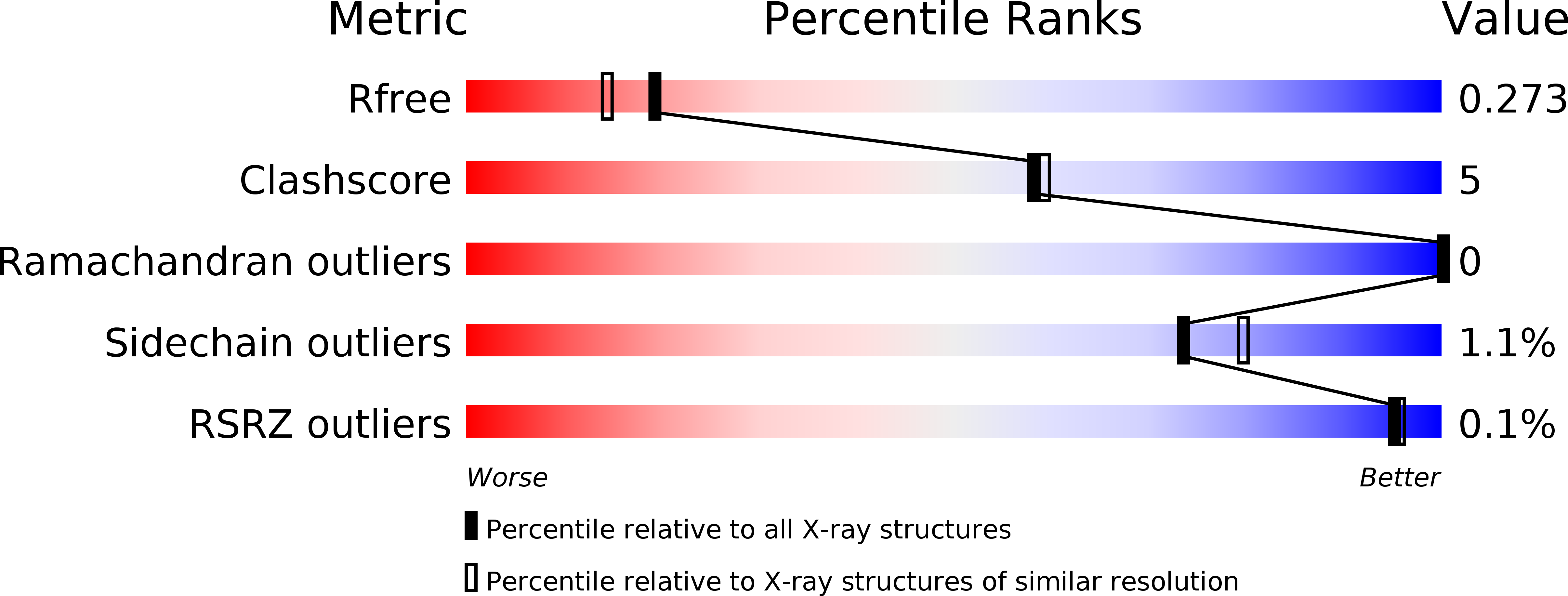Bisubstrate analogues as structural tools to investigate m6A methyltransferase active sites.
Oerum, S., Catala, M., Atdjian, C., Brachet, F., Ponchon, L., Barraud, P., Iannazzo, L., Droogmans, L., Braud, E., Etheve-Quelquejeu, M., Tisne, C.(2019) RNA Biol 16: 798-808
- PubMed: 30879411
- DOI: https://doi.org/10.1080/15476286.2019.1589360
- Primary Citation of Related Structures:
6QDX, 6QE0, 6QE5, 6QE6 - PubMed Abstract:
RNA methyltransferases (MTases) catalyse the transfer of a methyl group to their RNA substrates using most-often S-adenosyl-L-methionine (SAM) as cofactor. Only few RNA-bound MTases structures are currently available due to the difficulties in crystallising RNA:protein complexes. The lack of complex structures results in poorly understood RNA recognition patterns and methylation reaction mechanisms. On the contrary, many cofactor-bound MTase structures are available, resulting in well-understood protein:cofactor recognition, that can guide the design of bisubstrate analogues that mimic the state at which both the substrate and the cofactor is bound. Such bisubstrate analogues were recently synthesized for proteins monomethylating the N6-atom of adenine (m 6 A). These proteins include, amongst others, RlmJ in E. coli and METLL3:METT14 and METTL16 in human. As a proof-of-concept, we here test the ability of the bisubstrate analogues to mimic the substrate:cofactor bound state during catalysis by studying their binding to RlmJ using differential scanning fluorimetry, isothermal titration calorimetry and X-ray crystallography. We find that the methylated adenine base binds in the correct pocket, and thus these analogues could potentially be used broadly to study the RNA recognition and catalytic mechanism of m 6 A MTases. Two bisubstrate analogues bind RlmJ with micro-molar affinity, and could serve as starting scaffolds for inhibitor design against m 6 A RNA MTases. The same analogues cause changes in the melting temperature of the m 1 A RNA MTase, TrmK, indicating non-selective protein:compound complex formation. Thus, optimization of these molecular scaffolds for m 6 A RNA MTase inhibition should aim to increase selectivity, as well as affinity.
Organizational Affiliation:
a Laboratoire d'Expression génétique microbienne, Institut de Biologie Physico-Chimique, IBPC, CNRS , Université Paris Diderot , Paris , France.















